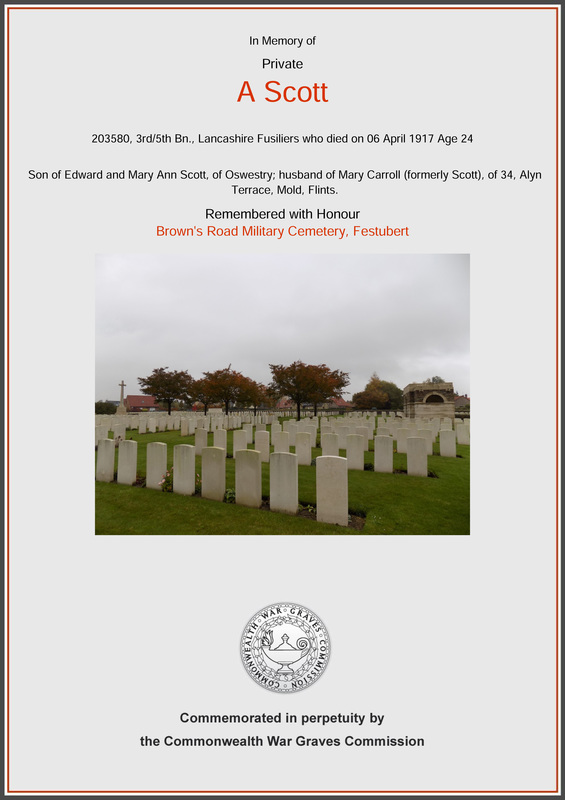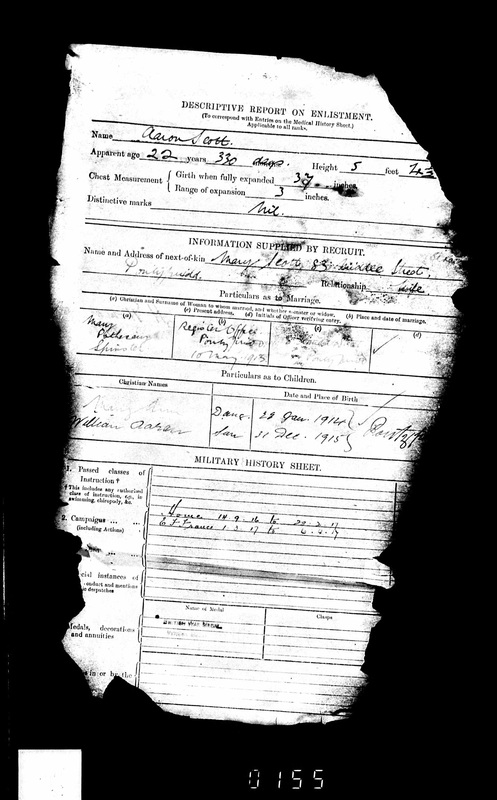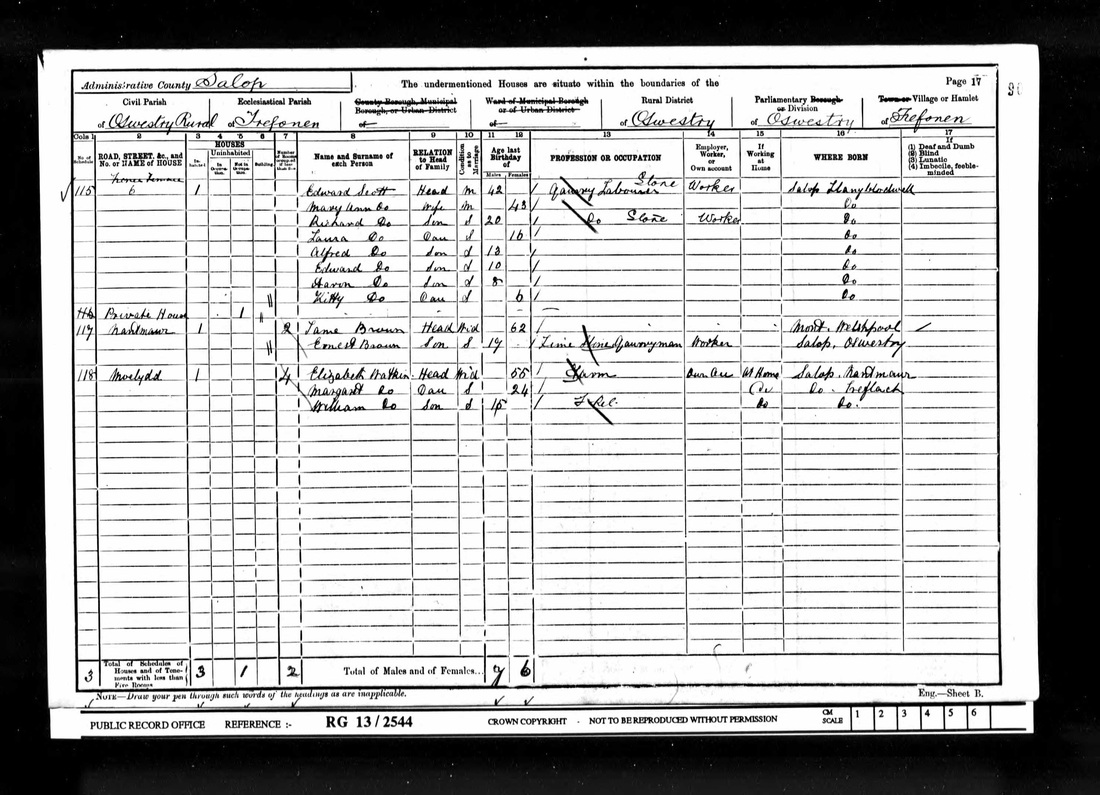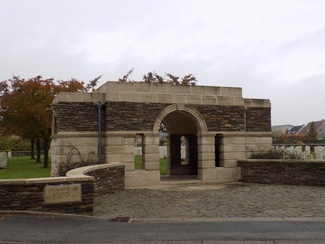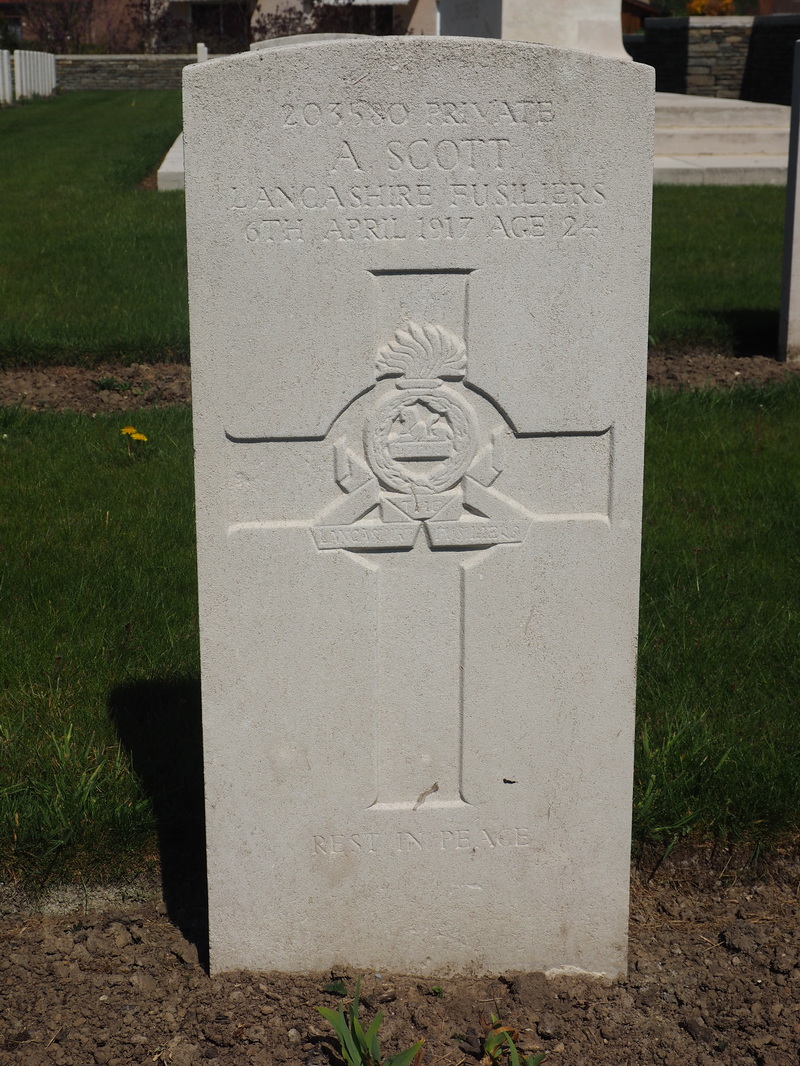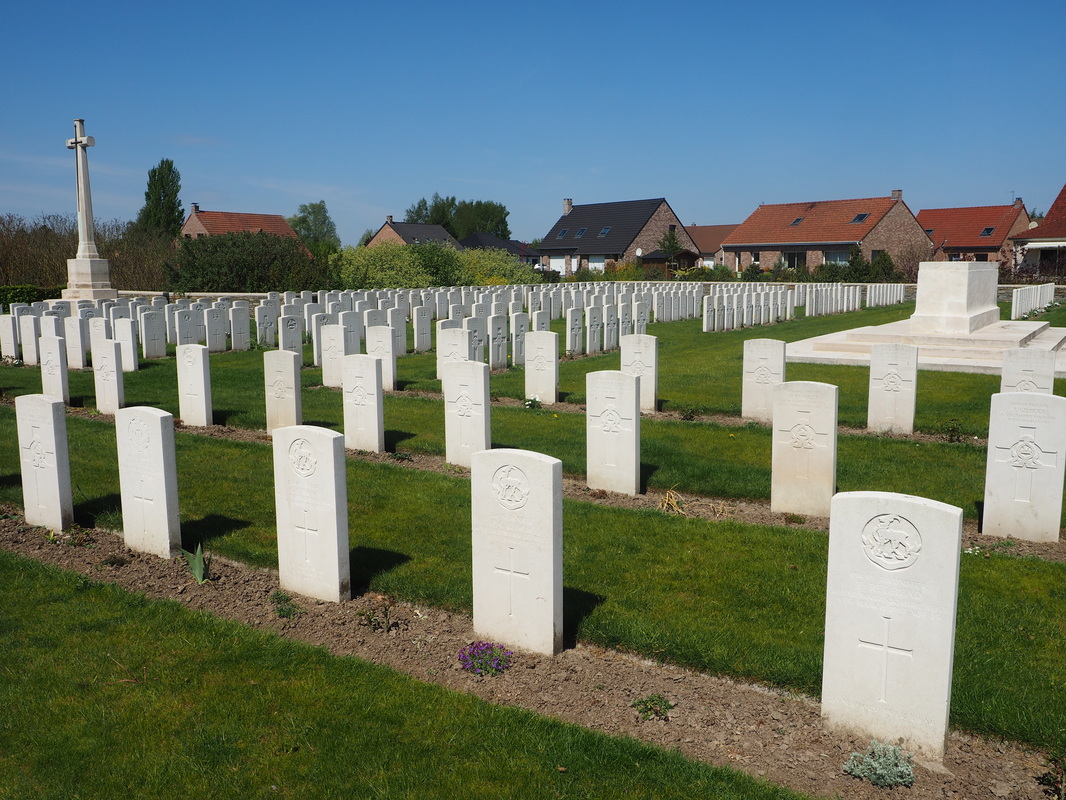Aaron Scott
|
Introduction
Aaron Scott was born in Llanyblodwell, Shropshire in 1894. He was the son of Edward and Mary Ann Scott and was one of at least six children. By 1901 the family was living in Trefonen. (see census data below) Aaron was married to Mary Pothecary on 13th May 1913 at the Registry Office in Pontpridd. They would have two children, a daughter Mary born on 23rd January 1914, and a son, William, born on 31st December 1915. The family lived at 83 Middle Street, Pontypridd. Aaron was called up on 14th September 1916, aged 22 and enlisted in Pontypridd. On enlistment he stood at 5 foot 4 inches tall. |
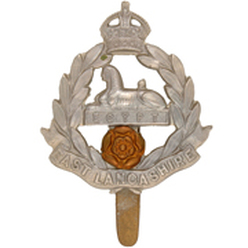
Military Record including Regimental and Battalion information
He was posted to the 3/5th Battalion, Lancashire Fusiliers. The battalion was initially formed in 1914 for home service before becoming an operational battalion in the autumn of 1916. Aaron would have been posted to the battalion in Tunbridge Wells in the autumn of 1916 as it prepared for overseas service.
From March 1917, the battalion served with 197th Brigade, 66th (2nd East Lancs) Division.
The battalion, including Private Aaron Scott left its barracks in Colchester on 28th February 1917 and entrained for Southampton, where it embarked on two ships to cross the channel, the SS Queen Alexandra and the SS Manchester Importer. The following morning they disembarked at Le Havre and marched to Rest Camp No.2. The following day they entrained for Thiennes, where they arrived on the evening of the 3rd March, some 12 hours later than planned. They then marched to billets in Wittes, where they began training and a period of trench acclimatisation. On the 7th March, the battalion marched the 20 miles to Locon to move closer to the front, a march described in the war diary as ‘trying’ due to the very strong cold wind. Over the coming days the weather was bitterly cold and there was much snow on the ground.
Two days later, the battalion was on the march again as it moved south to new billets in Beuvry, where they continue their trench instruction and training. On the 15th March, the battalion moved into the trenches for the first time. They took over positions near Givenchy, where they were to remain until relived on the 19th when they moved into billets in the hay lofts and stables of Gorre Chateau. In this sector the trenches were all breastworks, the ground being too wet to dig down into, so trenches were built upwards.
The battalion remained at Gorre Chateau until the 24th when they returned to the trenches, although in this period the chateau was shelled on a number of occasions by the Germans, but without causing any casualties. During this next tour of the trenches, the battalion returned to the Givenchy sector and held trenches called Richmond Terrace, Cover Trench and Canadian Orchard.
Following a few days’ rest, the battalion returned to the trenches for another six day tour. It was as this tour of the trenches came to an end that Aaron Scott was killed in action on 6th April 1917. He was buried at Brown’s Road Military Cemetery, Festubert. (Grave III.B.5) His headstone bears the inscription ‘Rest in Peace.’
The following report was printed in the Western Mail on Friday 27th April, 1917;
Private Aaron Scott, Lancashire Fusiliers, was killed by a German sniper on Good Friday. Prior to enlisting he was employed by the Pontypridd and Rhondda Joint Water Board. He had been in France six weeks. He was one of three brothers, the other two being still in the firing line. A widow and two children reside at 89, Middle Street, Pontypridd.
His wife later remarried and lived at 34, Alyn Terrace, Mold
Medals awarded: British War Medal and Victory Medal. Memorial Plaque and Memorial Scroll.
The written information above has kindly been provided by Simon Bendry a Gloucester based researcher and friend of the family ancestors of Aaron Scott.
For further information on the Lancashire regiments click on the link below
http://www.lancashireinfantrymuseum.org.uk/the-regiments-in-the-great-war-1914-18-3/
The enlistment document below is the only full page left of Aaron' war history held by the National
Military Records Office
He was posted to the 3/5th Battalion, Lancashire Fusiliers. The battalion was initially formed in 1914 for home service before becoming an operational battalion in the autumn of 1916. Aaron would have been posted to the battalion in Tunbridge Wells in the autumn of 1916 as it prepared for overseas service.
From March 1917, the battalion served with 197th Brigade, 66th (2nd East Lancs) Division.
The battalion, including Private Aaron Scott left its barracks in Colchester on 28th February 1917 and entrained for Southampton, where it embarked on two ships to cross the channel, the SS Queen Alexandra and the SS Manchester Importer. The following morning they disembarked at Le Havre and marched to Rest Camp No.2. The following day they entrained for Thiennes, where they arrived on the evening of the 3rd March, some 12 hours later than planned. They then marched to billets in Wittes, where they began training and a period of trench acclimatisation. On the 7th March, the battalion marched the 20 miles to Locon to move closer to the front, a march described in the war diary as ‘trying’ due to the very strong cold wind. Over the coming days the weather was bitterly cold and there was much snow on the ground.
Two days later, the battalion was on the march again as it moved south to new billets in Beuvry, where they continue their trench instruction and training. On the 15th March, the battalion moved into the trenches for the first time. They took over positions near Givenchy, where they were to remain until relived on the 19th when they moved into billets in the hay lofts and stables of Gorre Chateau. In this sector the trenches were all breastworks, the ground being too wet to dig down into, so trenches were built upwards.
The battalion remained at Gorre Chateau until the 24th when they returned to the trenches, although in this period the chateau was shelled on a number of occasions by the Germans, but without causing any casualties. During this next tour of the trenches, the battalion returned to the Givenchy sector and held trenches called Richmond Terrace, Cover Trench and Canadian Orchard.
Following a few days’ rest, the battalion returned to the trenches for another six day tour. It was as this tour of the trenches came to an end that Aaron Scott was killed in action on 6th April 1917. He was buried at Brown’s Road Military Cemetery, Festubert. (Grave III.B.5) His headstone bears the inscription ‘Rest in Peace.’
The following report was printed in the Western Mail on Friday 27th April, 1917;
Private Aaron Scott, Lancashire Fusiliers, was killed by a German sniper on Good Friday. Prior to enlisting he was employed by the Pontypridd and Rhondda Joint Water Board. He had been in France six weeks. He was one of three brothers, the other two being still in the firing line. A widow and two children reside at 89, Middle Street, Pontypridd.
His wife later remarried and lived at 34, Alyn Terrace, Mold
Medals awarded: British War Medal and Victory Medal. Memorial Plaque and Memorial Scroll.
The written information above has kindly been provided by Simon Bendry a Gloucester based researcher and friend of the family ancestors of Aaron Scott.
For further information on the Lancashire regiments click on the link below
http://www.lancashireinfantrymuseum.org.uk/the-regiments-in-the-great-war-1914-18-3/
The enlistment document below is the only full page left of Aaron' war history held by the National
Military Records Office
Census data
The 1901 census forms below shows Aaron aged 8 living in Trefonen
The 1901 census forms below shows Aaron aged 8 living in Trefonen
|
War Grave and Memorial Information
Private Aaron Scott 203580 Lancashire Fusiliers is buried in Browns Rd Cemetary in Festubert Historical Information Festubert was occupied by Commonwealth forces in October 1914 and on 23-24 November, the Indian Corps repulsed a German attack. The Battle of Festubert (15-25 May 1915) resulted in a short advance which left the village somewhat less exposed than it had been. Except for an advance which was attempted just to the south of Festubert (the Second Action of Givenchy, 15-16 June 1915), this sector remained quiet until 9 April 1918 and the beginning of the Battle of the Lys. Festubert was held by the 55th (West Lancashire) Division against the German assault, and successive attacks lasting through the month were repelled by the 1st and other Divisions. It remained an outpost for Commonwealth forces until the final advance began in September 1918. The cemetery was begun in October 1914, and carried on by fighting units and field ambulances until November 1917, when it contained 299 graves. It was greatly enlarged after the Armistice when graves were brought in from small cemeteries and isolated sites on the surrounding battlefields. |
click on the link below for more information
http://www.cwgc.org/find-a-cemetery/cemetery/2000035/BROWN%27S%20ROAD%20MILITARY%20CEMETERY,%20FESTUBERT
http://www.cwgc.org/find-a-cemetery/cemetery/2000035/BROWN%27S%20ROAD%20MILITARY%20CEMETERY,%20FESTUBERT
The photos here of Aaron's grave were taken on a visit by Chris Woods in May 2016
